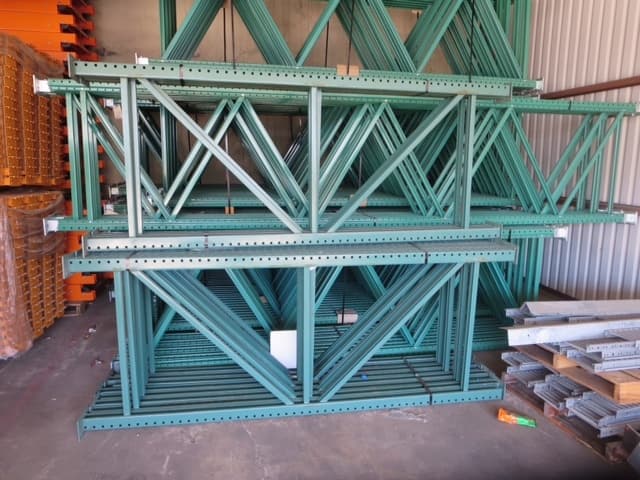8 Signs You Need to Repair (or Replace) Warehouse Rack Right Away
Well-built racks will last for years. They rarely need any sort of maintenance, as long as workers follow loading/unloading guidelines.
However, like forklifts, warehouse rack & shelving eventually wear out. When they weaken to the point of failure, you're faced with one of the worst possible situations – a collapse. Destroying product, damaging the facility, ruining workflow, and most worst of all, injuring or even killing workers.
Nobody wants that to happen. So we keep an eye on our racks. Looking for warning signs that a rack might have an issue.
Some of these are obvious: Rust all over a beam, bent uprights, and so on. Others aren't so obvious. Spotting these takes a more watchful eye…but the good news is, once you see one, it's easier & more affordable to repair.
That's what we're talking about in this newsletter. Warning signs for Rack & Shelving wear-and-tear, which you can spot ahead of time & fix before anything worse happens.
Where to Find Out about Rack Wear-and-Tear
Let me make this clear: You can and should do regular rack inspections. Just like inspecting forklifts, it serves to help maintenance. Don't ignore workers' reports though...they're around the rack more often.

8 Signs of Rack Wear, Instability, or Collapse Risk
What are some of those less-than-obvious signs of wear? We've gathered up 8 of them here. Some you may already know. Some you may think are no big deal. It depends on the rack's overall condition, which only you can see.
I asked my Service Manager which signs his team sees while replacing rack for customers. His team's input matched a lot of my own experience. Here are the 8 wear-and-tear signs which stood out.
- Anchor Bolts Stick Up from the Floor.
One or more anchor bolts sticking from an upright's foot plate? The rack is off-balance, or suffered an impact. Rebalance the rack and replace the bolts. - Swaying.
Workers report seeing the upper sections of rack sway like tree branches. This means safety braces have failed or will fail soon. Inspect & replace any damaged braces. (If the rack didn't have braces already, install a set.) - Corrosion.
I don't mean rust. Instead, there's flaking paint, or tarnish on beams. This could either come from too much pressure on that segment of rack, or from exposure to weathering. In both cases, the best course of action is to replace the piece. - Shelves Look Pale.
Does the wood on your shelving units look noticeably paler? It's becoming brittle. Could crack if it gets worse. To fix, just replace the shelf. (The same holds true for wooden pallets.) - Folded-In Joint / "Deflection."
When a steel joint folds/collapses in like a bent cardboard tube. This is bad. It's at risk of collapse. Get everyone away from the rack.
If it still holds product, remove the load completely from the shelf and any shelves above it. Once the area around the folded-in joint is empty of product, your workers are okay. Replace that segment of rack as soon as possible. - Scrapes on the Rack at Floor Level.
You've had forklift impacts on the rack. Hopefully someone reported this right away, so you can check the rack. If the scrape isn't severe and the anchor bolts are tight, have a service tech repair the rack. If the rack now looks unbalanced, clear it of product and replace the damaged piece. - Scrapes on the Rack at Eye Level.
This is a different situation than #6. Scrapes at eye level could come from forklift forks hitting the beam, or from pallets impacting during load/unload.
Inspect the area around each scrape. It may not need repair, but operators should receive extra training to prevent future impacts. These can trigger collapses just as much as floor-level damage. - Space Appears Between Beams & Uprights.
Is there a gap between a beam and its upright? The beam could have bowed down (too much weight), or the attaching bolts could have slipped.
First, check the beam for bowing. Replace if it has. Next, check the upright to make sure the bolt holes haven't stripped. If not, replace the bolts.
Boost Your Company's Overall Safety
I'm sure you'd agree that rack safety is just as important as forklift safety. Collapses are rare, as they should be. With a little awareness among our teams, we can keep them that way.
Share this article with your team! They may not know about all of these signs. It only takes 10 minutes to read, and you end up boosting the entire company's safety.
Until next month!
Marshall Cromer, The Forklift Boss
Cromer Material Handling



